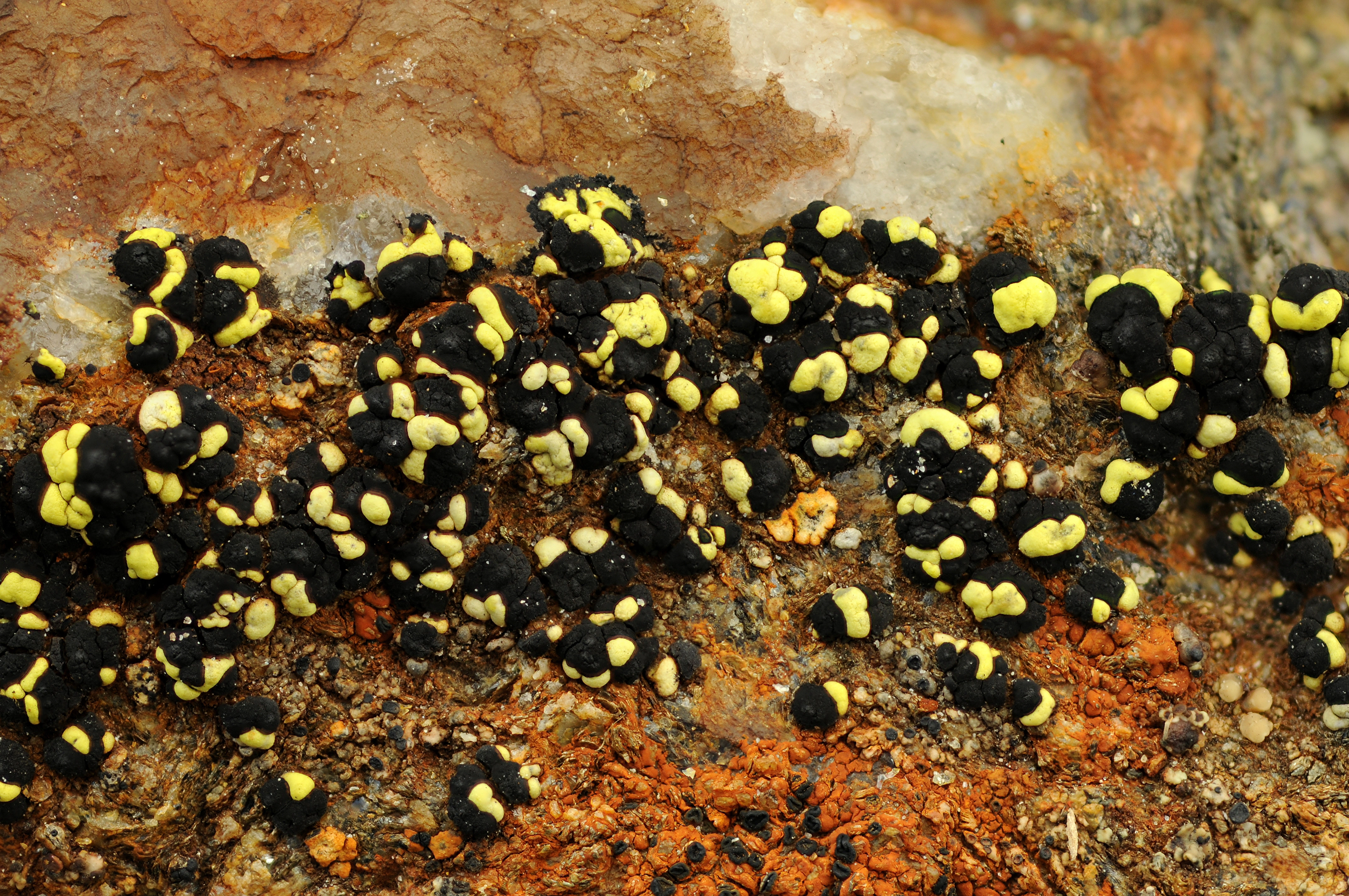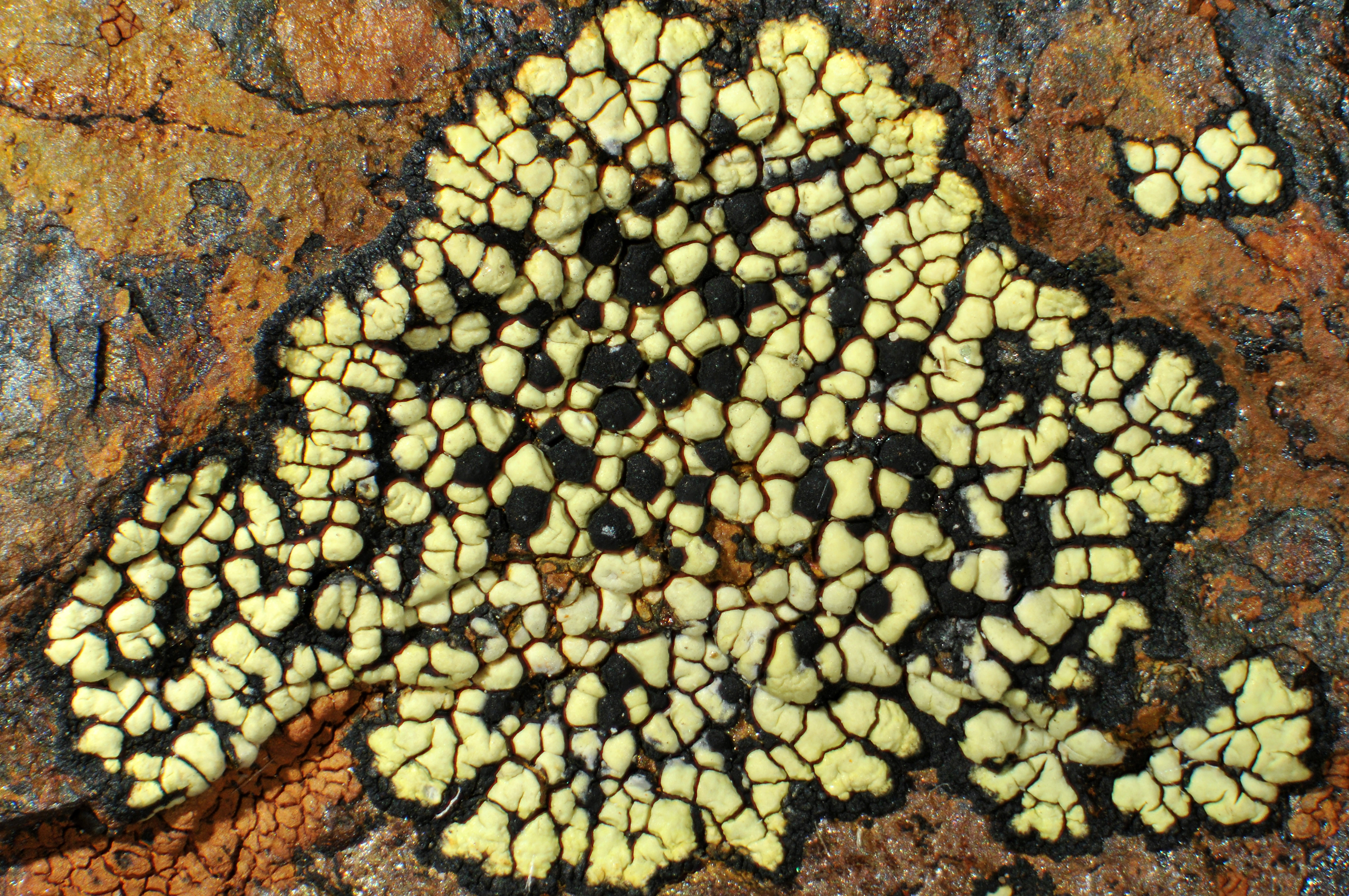Rhizocarpon norvegicum
- Innhold
- Morphology
- Chemistry
- Habitat
- Comment
- Look-alikes
Morphology
Thallus consisting of scattered to confluent groups of areolae, each group rarely exceeding 1 cm diam., often parasitic when young and later becoming autonomous; hypothallus varying from apparently absent to rather well developed, black; areolae up to 1 mm diam., bright yellow, dull, simple or a few areolae contiguous, angular to orbicular, plane to hemispherical, smooth or minutely scabrous; medulla KI+ dark violet. – Apothecia up to 1 mm diam., black, epruinose, orbicular to angular, plane to weakly convex, indistinctly marginate; excipulum brownish black in the rim, paler in the inner part, K+ red; hypothecium dark brown, K–; hymenium colourless; epihymenium brownish black, K+ red; no crystals or granules in the apothecia; ascospores 8 per ascus, 1-septate, dark brown, 9–15 × 6–7 µm. – Conidiomata not seen.
Chemistry
Rhizocarpic and often stictic acid; spot tests: medulla PD– or PD+ orange, K– or K+ yellow, C–.
Habitat
On exposed rock with few competing lichens. When young often parasitic on Acarospora, Polysporina, and Rinodina, most frequently on A. sinopica. Mainly in the mountains, and most common on calciferous schists or rock rich in iron minerals.
Comment
The species is mainly characterized by having a yellow, small, when young parasitic thallus, an amyloid medulla, and 1-septate, small ascospores. It differs from R. effiguratum and R. parvum, which share these features, in various morphological and usually also in chemical characters. In the field, it may be confused mainly with R. intermediellum, but that species forms 3-septate to submuriform ascospores.



